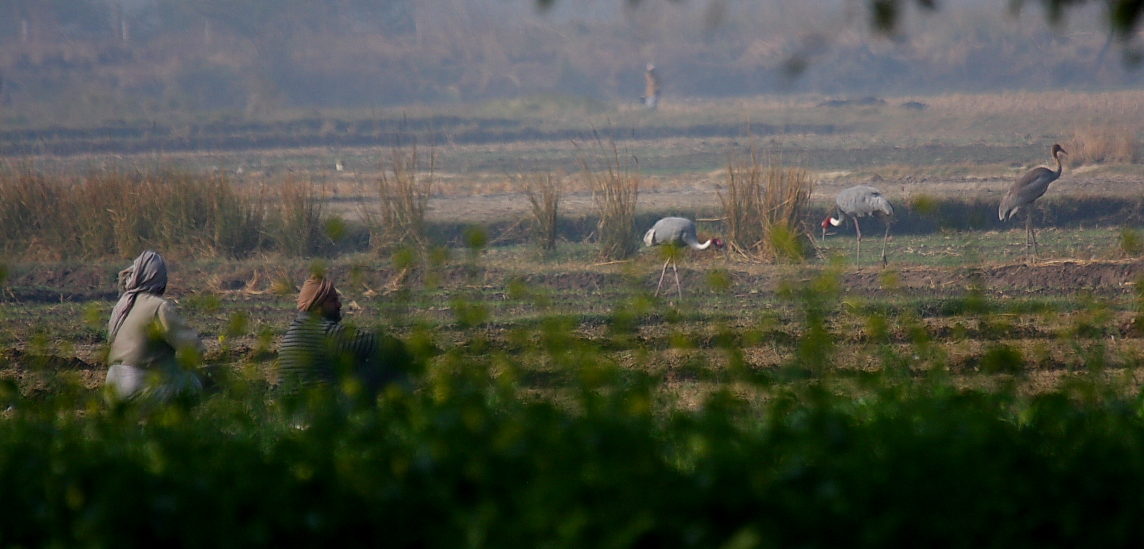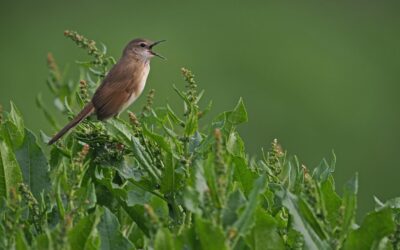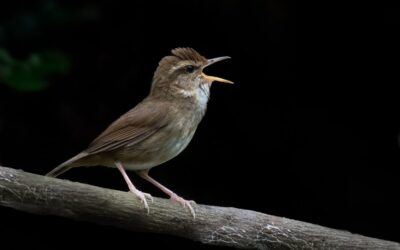Author: Lauren Chambliss, Cover Image: Sarus Cranes, by Gopi Sundar
The article has been adapted for Indian audiences and was originally published in the winter issue of Living Bird magazine.
Uttar Pradesh is dominated by crowded urban centres and intense agriculture, typically not a good recipe for large wetland birds. Yet cranes in Uttar Pradesh are flourishing, not despite the people — but because of the people.
To the surprise of crane scientists who conducted surveys here, the Sarus Crane—tallest of the world’s flying birds, listed as vulnerable on the International Union for the Conservation of Nature’s Red List—is feeding, nesting, and successfully raising young in rice paddies and wheat fields throughout this tightly packed agricultural landscape.
Worldwide, 11 of the 15 crane species are listed as either vulnerable or endangered on the IUCN Red List, so the prosperity of Sarus Cranes in Uttar Pradesh is a happy anomaly. In this northern Indian state that’s famous for the Taj Mahal, humans have managed to make room for cranes, even as people have developed nearly all of their natural habitat.
“Uttar Pradesh is 70 percent agriculture, 20 percent urban, and 10 percent scrubland, which is not usually a good landscape for wetland birds,” says Gopi Sundar, crane biologist with the Nature Conservation Foundation. Sundar initiated the first detailed crane survey in the area a decade ago and discovered a population 13,000 strong, and growing. With only around 25,000 Sarus Cranes in the entire world, the birds in Uttar Pradesh make up more than half the global population.
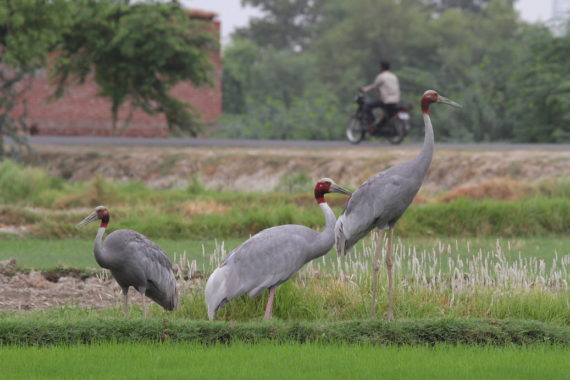
More than half of the global Sarus Crane population resides in the state of Uttar Pradesh. Photo: Gopi Sundar
“What we found is astounding. A lot more cranes than we ever imagined, and they have been there for thousands of years,” Sundar says. Indeed, there are references to the relationship between Sarus Crane and people in Uttar Pradesh in the Ramayana.
“Villagers and farmers not only tolerate them, but welcome them,” Sundar says. “People have evolved with the cranes.”
Sundar, who is also the director of Program Saruscape for the International Crane Foundation, credits cultural factors for the bird’s extraordinary success in the region. Villagers here believe the giant bird with the bright red head brings good fortune. In Etawah, a city perched on the banks of the Chambal River, it is believed that hearing a Sarus trumpet in the night means it is a propitious time to take action on a big life event, such as proposing marriage or making an investment.
Kailash Jaiswal, a 21-year-old local villager, remembers his father and grandfather telling him never to bother the three pairs of cranes that nested on their family’s 2.5 acre farm.
“Even if there was a small bit of damage in the field, we would just ignore it,” he recalls. There was a belief that if a Sarus nests and breeds in your field, the output that year will be much higher.”
But Sarus Cranes are not so beloved everywhere. They construct large platform nests that can be the size of a kitchen table, and they often tear up entire rice stalks for building material, which can lead to farmer complaints and conflicts. Across the Sarus range – India, Southeast Asia, and Australia – there are few thriving populations. In Cambodia and Vietnam, Sarus have declined to only about 1,000 cranes in the wild.
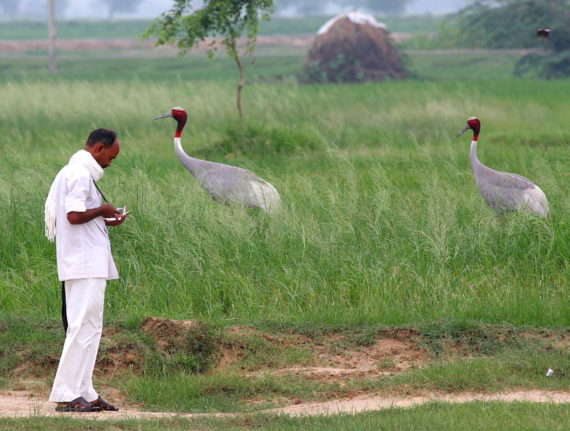
Despite a population of over 200 million people, a combination of cultural appreciation, respect and dual agricultural cycles in Uttar Pradesh have helped the Sarus establish the state as a stronghold. Photo: Gopi Sundar
But in Uttar Pradesh, the cranes are welcomed, and the seasonal rhythm of smallholder farming is a good fit for the crane’s life cycle. Most farmers employ rotational cropping systems of rice in the monsoon season (good crane nesting habitat) and wheat in the dry season (providing a year-round food source for cranes). Studies have shown that Sarus do better in rice and wheat fields than soy or sugar cane.
“Sarus Cranes are a flagship for sustaining this diverse agricultural landscape,” says the ICF’s Beilfuss. “In India the species is living in harmony with people in one of the most densely populated areas of the world.”

